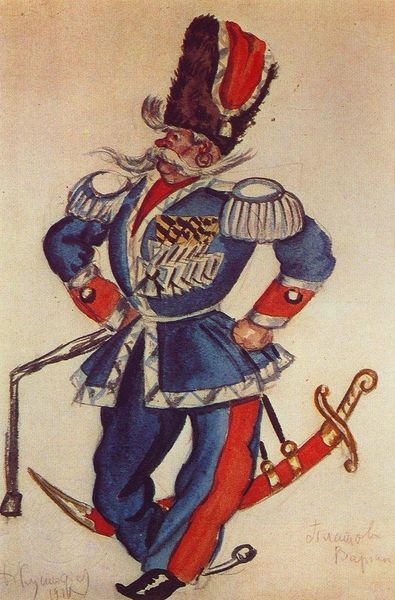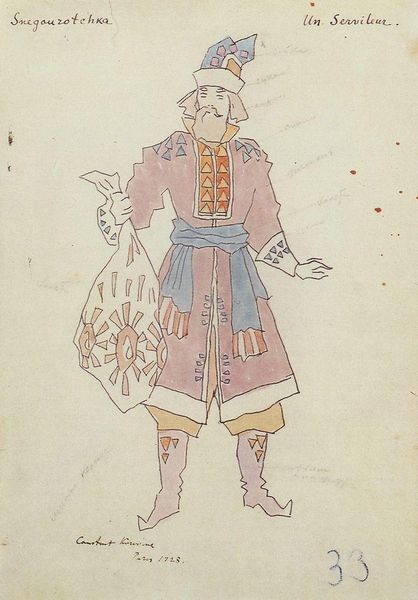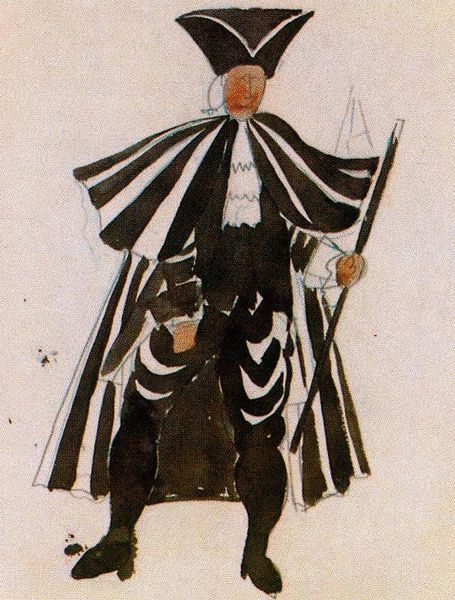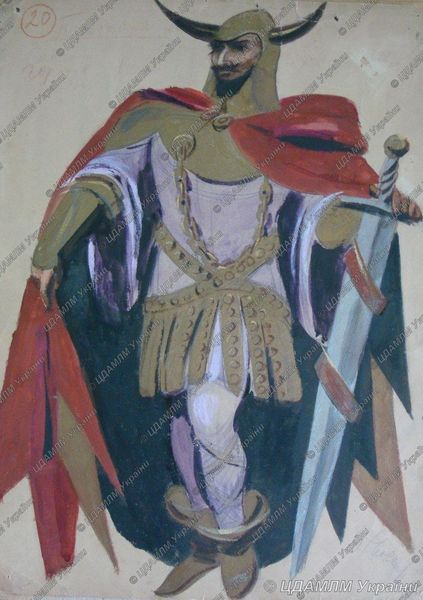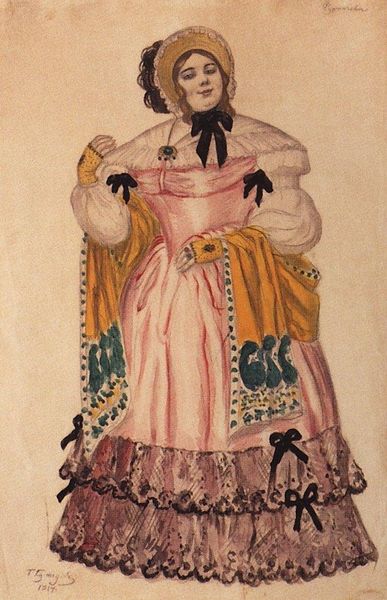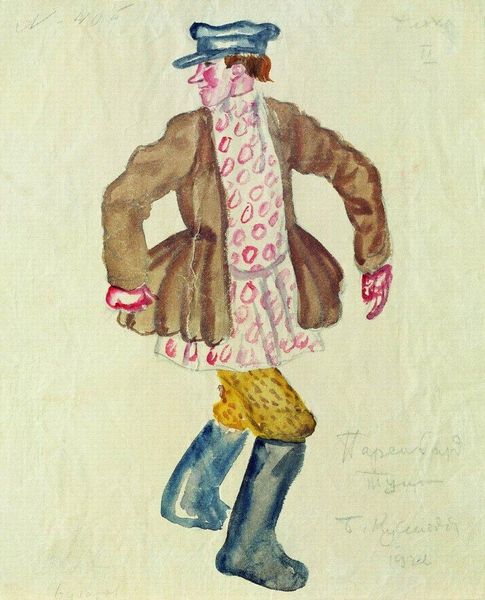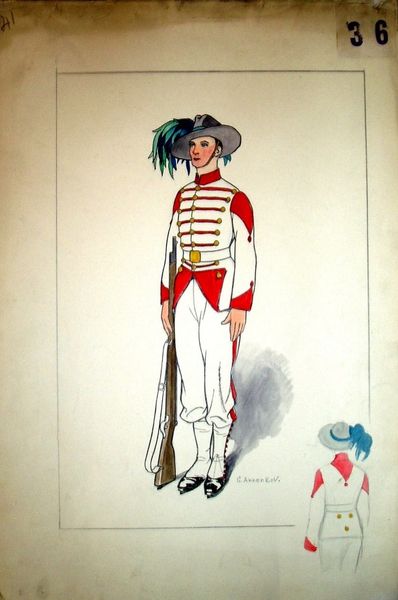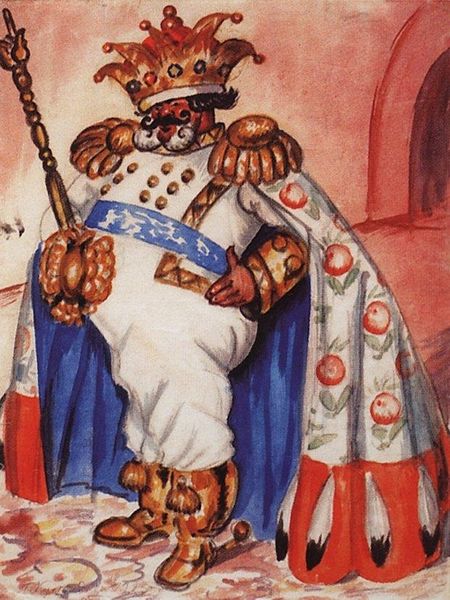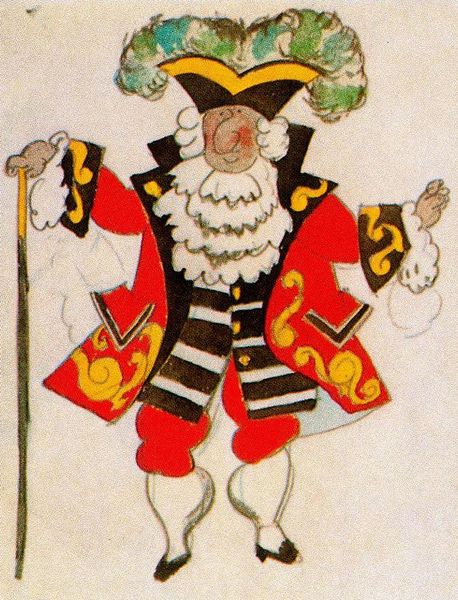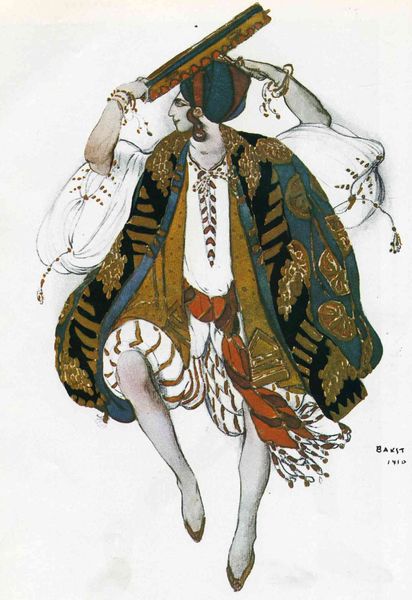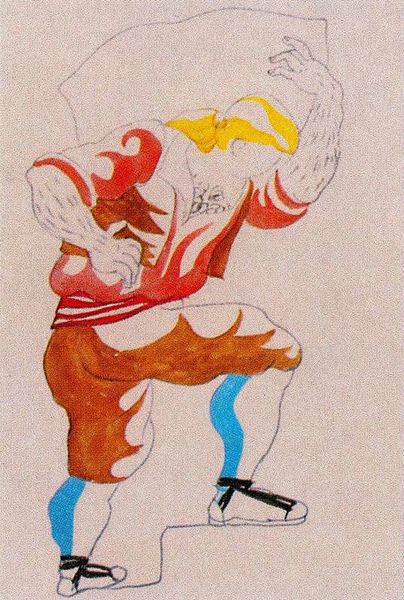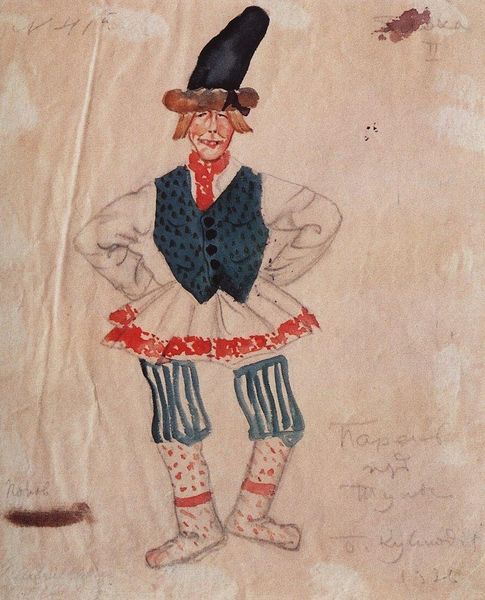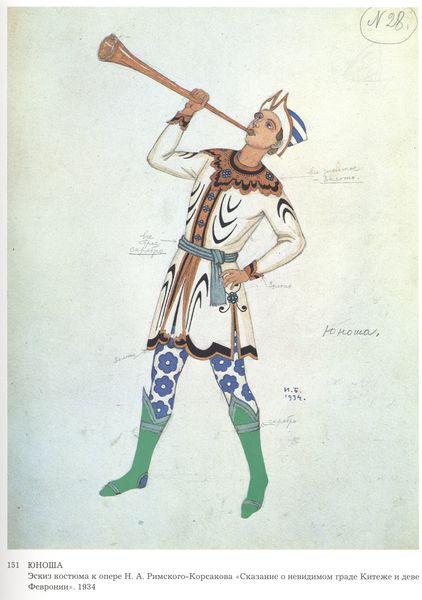
Copyright: Public domain
Editor: This is Boris Kustodiev's "Kiselvrode," painted in 1924, using watercolor. It's…certainly striking. The costume is so elaborate and the figure itself is rather…eccentric. How do you interpret this work, looking at it from an art expert's perspective? Curator: Well, observe how Kustodiev has manipulated line and form. Note the deliberate exaggeration of the figure’s features – the elongated nose, the sloping shoulders. How does that play against the geometric exactness of the costume's ornamentation, all those meticulously rendered triangles and stripes? Editor: I see what you mean! It's like a contrast between organic and geometric shapes, maybe suggesting tension between the character and his social role as presented in the costume? Curator: Precisely! And consider the color palette. The juxtaposition of the vibrant reds against the stark white, and that daring splash of blue on his strange headpiece. Do these choices seem arbitrary or are they carefully considered? How do they work together? Editor: It seems deliberate, I mean the boldness and variety make the portrait more dynamic and draws my eye through every bit of detail across the surface of the paper. Are these dissonances reflective of the Russian avant-garde? Curator: Indeed. The piece plays with contrasting colors and shapes within the subject and uses bold exaggeration to challenge the classical portrait standards. Editor: I never would have caught so much detail if you hadn’t pointed it out! I had a knee-jerk reaction, and now I appreciate how strategically constructed the piece actually is. Curator: Art, after all, is about learning to truly see. It's like, every work contains countless opportunities for close formal examination.
Comments
No comments
Be the first to comment and join the conversation on the ultimate creative platform.
